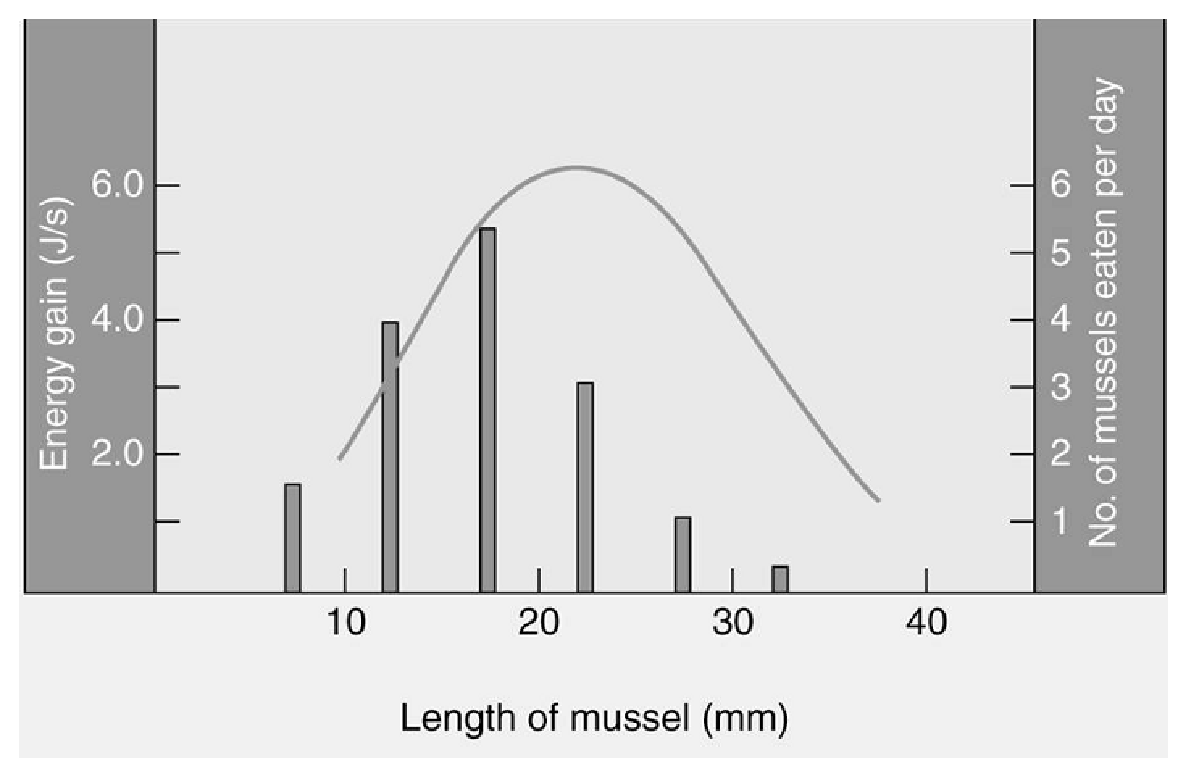All of the following factors can cause rapid evolutionary "jumps" except ________
A) single alleles with major effects on life history
B) hybridization between species, producing a form that differs from both parents
C) stabilizing selection on homeotic genes
D) horizontal gene transfer between unrelated organisms
E) transposable genetic elements, or transposons
C
You might also like to view...
If the frequency of allele A is .7, using the Hardy-Weinberg formula, what would the frequency of the heterozygous Aa genotype be?
A. .09 B. .3 C. .42 D. .49 E. It cannot be calculated from the information provided.
Which of the following is the best interpretation of the graph below of mussel size (x-axis) versus energy gain (line graph, left y-axis), and number of mussels eaten per day (histogram, right y-axis)?

A. Mussels are selected as food sources by crabs.
B. Crabs select mussels in a way that maximizes their energy gain.
C. Mussel size does not seem to be a good predictor as to which mussel hungry crabs will select.
D. Crabs tend to consume most of the largest mussels.
E. Crabs prefer the mussels with the smallest length for their food resources.
Clarify question:
What is the key concept addressed by the question?
What type of thinking is required?
Gather Content:
What do you already know about optimal foraging behaviors? What other information is related to the question?
Choose Answer:
Given what you now know, what information is most likely to produce the correct answer?
Reflection on Process:
Did your problem-solving process lead you to the correct answer? If not, where did the process break down or lead you astray? How can you revise your approach to produce a more desirable result?
Photoperiodism is the ____
a. duration of flowering in a plant b. amount of light needed by a plant to exhibit normal growth c. response of a plant to the duration of light and darkness d. light phase of photosynthesis during which photolysis of water occurs e. opposite of photorespiration
Muscle tissue develops from which germ layer of an embryo?
a) endoderm b) ectoderm c) gastroderm d) mesoderm